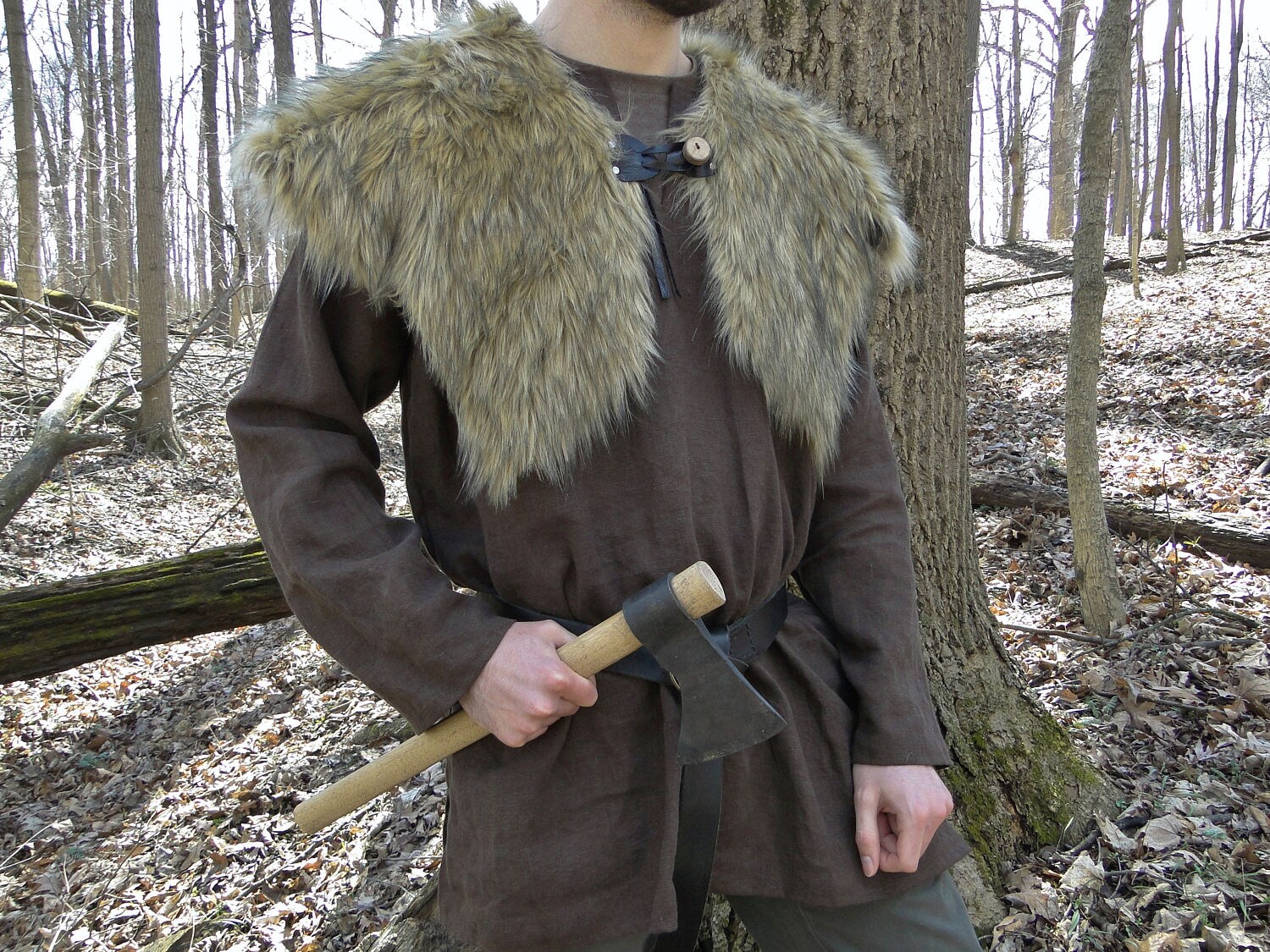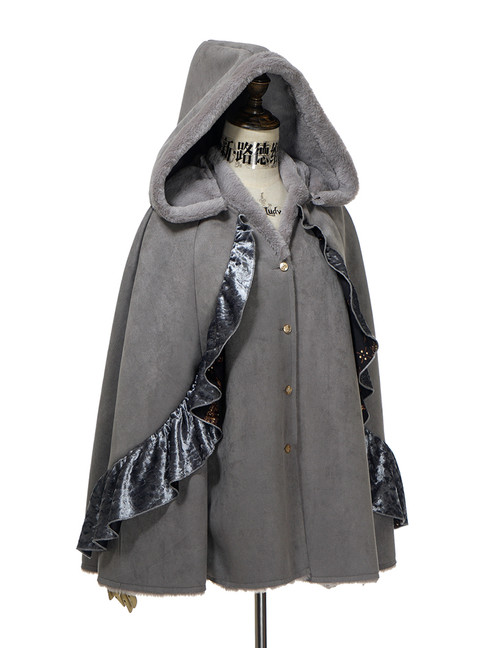

This hood with mantle is made from heavy and warm fleece with faux fur trim,lending this piece a rugged yet regal appearance.

Wear the Medieval Fur Trimmed Hood for an extra layer of warmth and protection at your next outdoor or cold weather reenactment event.
#MEDIEVAL FUR CAPE FULL#
In full evening dress, ladies frequently use the cape as a fashion statement, or to protect the wearer or the fine fabrics of their evening-wear from the elements, especially where a coat would crush-or hide-the garment. In raingear, a cape is usually a long and roomy protective garment worn to keep one dry in the rain. The fashion cape does not cover the front to any appreciable degree.

A shoulder cape is thus sometimes called a "capelet". In fashion, the word "cape" usually refers to a shorter garment and " cloak" to a full-length version of the different types of garment, though the two terms are sometimes used synonymously for full-length coverings. Semantic distinction A young woman in a crocheted cape The more elaborate and colorful tilmàtlis were strictly reserved for elite high priests, emperors and the Eagle warriors as well as Jaguar warriors. Cloth and clothing was of utmost importance to the Aztecs.

Rich noblemen and elite warriors of the Aztec Empire would wear a tilmàtli a Mesoamerican cloak/cape used as a symbol of their upper status. A gas cape was a voluminous military garment designed to give rain protection to someone wearing the bulky gas masks used in twentieth-century wars. Capes remain in regular use as rainwear in various military units and police forces, in France for example. Capes are often highly decorated with elaborate embroidery. The cope is a liturgical vestment in the form of a cape. Catholic clergy wear a type of cape known as a ferraiolo, which is worn for formal events outside a ritualistic context. They have had periodic returns to fashion - for example, in nineteenth-century Europe. History Tlatoani Nezahualpiltzintli Aztec king of Texcoco wearing a Mesoamerican cape Pazyryk horseman wearing cape 300 BCEĬapes were common in medieval Europe, especially when combined with a hood in the chaperon. Two Italian carabinieri (gendarmes) with capesĪ cape is a clothing accessory or a sleeveless outer garment which drapes the wearer's back, arms, and chest, and connects at the neck. Inverness cape, a sleeveless topcoat, common with Highland dress.


 0 kommentar(er)
0 kommentar(er)
